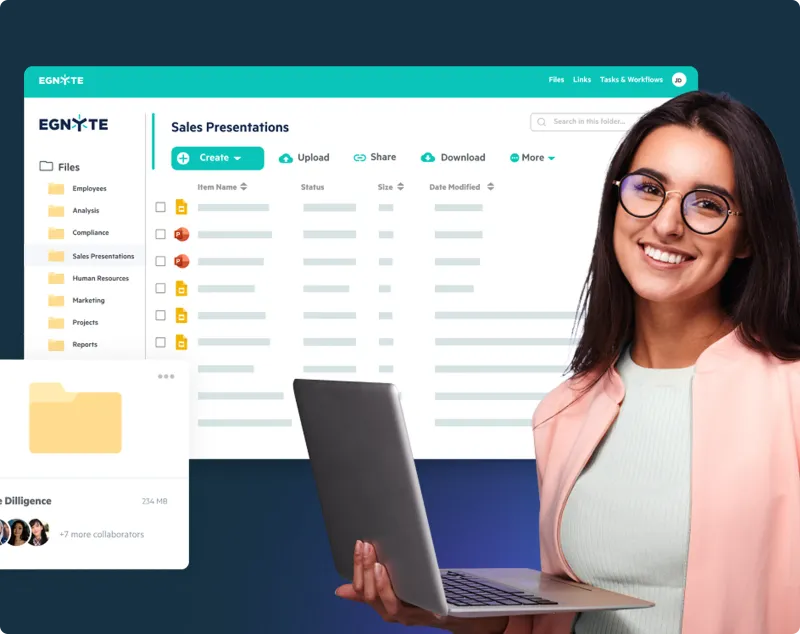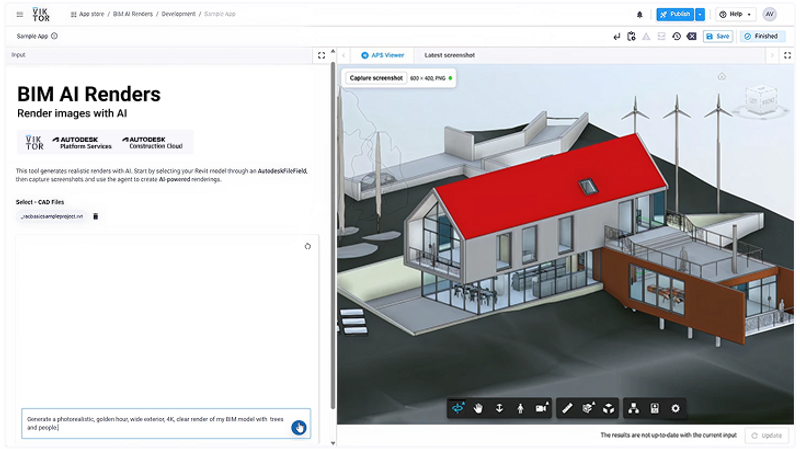Meet Scan2Plan: Offering an Innovative Approach to 3D Scanning
In the ever-evolving landscape of AEC technologies, numerous 3D mapping solutions have emerged, significantly enhancing AEC practitioners' workflow. As 3D mapping integrates into the AEC sector, selecting the right technology and product is crucial for specific project phases and typologies. Scan2Plan stands out as a pioneering force, providing a comprehensive one-stop solution with scanning, modeling, and drafting services all under one roof.
In this interview, we talk to V Owen Bush, Principal and CEO at Scan2Plan, discussing the product's origins. Scan2Plan, born from a VR venture, seamlessly transitioned into the fascinating world of "Spatial Computing". Read on and learn more about the product, its contributions to sustainability, robust data security measures, and success stories from impactful projects, including the Metropolitan Museum of Art and Newark Airport Terminal C. Scan2Plan's numerous unique features set it apart in the AEC industry, and its promising future developments include support for 6D & 7D BIM.

1- How did the idea for Scan2Plan come about?
In 2015, I founded a VR company that exited in 2018. We spent a lot of time innovating what “Spatial Computing” would become. When I was thinking about what’s next I realized that the “reality” part was getting more traction than the “virtual” part, and I wanted to do something that would get me more engaged with my local community. I started making 3D Tours of the many amazing historic buildings up here in Troy, Albany and the Hudson Valley. Troy, NY, is a city full of Architects and Engineers, and through friends I found that Reality Capture is also a great way to do existing conditions documentation. What got me to double down on Scan2Plan is that I really enjoy working with Architects and Engineers, and I am fascinated by their process.
“Having been on the cusp of many different tech trends throughout my career, I think Spatial Computing is the next big wave in tech, and some of the first practical applications are happening in the AEC industry, as it’s all about understanding and documenting spaces,” Owen explains.

2- Why is the name "Scan2Plan", and what unique features do you offer for the AEC industry?
Our motto at Scan2Plan is “focus on design”. We want to empower the visionaries in this field to do more of what they’re best at. Firms need to ask themselves if their time is best spent documenting buildings or designing buildings and growing their business. In that regard, we help firms stay true to their mission. What sets us apart is the high level of detail and precision in our models. We also offer multiple standards and can tailor projects to their specific priorities. The name “Scan2Plan” refers to the fact that we are a one-stop shop. There are many scanning, modeling and drafting companies, but we do it all under one roof and make it exceptionally easy for our partners.

3- Could you provide a comparative analysis of “Scan2Plan” and two to three similar companies?
Every year there are more ways to “capture reality” from direct to consumer DIY solutions to full-service B2B services like Scan2Plan. These options service everyone from hobbyists to entertainment to real estate to AEC. In order to properly evaluate the options it’s best to understand their underlying technologies, for which you can find an overview in this article. I will say that in this landscape, Scan2Plan is not trying to be the fastest or the cheapest, we’re trying to be the best.
4- How does Scan2Plan facilitate collaboration among different stakeholders?
For any project involving construction it’s essential to have a “single source of truth” for project coordination. This ensures that all vendors, consultants and contractors are on the same page. In our case, the single source of truth we provide is the point cloud dataset captured with high-end LiDAR scanners. Our point clouds have millimeter accuracy. From the point cloud we are able to output documentation in any form of BIM or CAD. This allows multiple teams to collaborate from a single source of truth even though they may be working in different software platforms.
"In the case of any confusion with documents, teams can return to the point cloud as an archival insurance policy for risk-mitigation," Owen stresses.

5- What are some of the most significant milestones and improvements the platform has achieved over the years?
We’ve made continual changes over the years to our scanning technology, our BIM/CAD standards, our personnel, and our custom-built project management software. The result is 100% satisfaction from our clients over the past year or so. We started with mostly residential projects but now are working in large-scale commercial, MEPF focused projects, avation, museums and churches.
6- In what ways does Scan2Plan contribute to sustainability and environmentally conscious practices in the AEC industry?
Saving and repurposing buildings with Scan2Plan actively contributes to reducing the carbon footprint associated with new builds. The conscious decision to work with what exists is our commitment to environmental sustainability. We’re dedicated to adaptive reuse and preserving the legacy of superior craftsmanship and timeless beauty. The building materials of the past, wood, stone, and metal, were crafted to endure generations. Our services not only safeguard the cultural legacy of buildings but also conserve the embodied energy in these materials.


7- What sets your company apart from others providing similar services?
- We have the highest standards that I know of for a service like this. This includes high-end (LoD 350) construction-ready documents.
- We offer three different LoD Standards and 4 disciplines (architectural, structural, MEPF & Landscape) to custom scope the priorities of each project.
- We support every project until our partners have 100% satisfaction. This includes revisions, custom standards, and close communication.
- We have a small dedicated team with a process-driven workflow to ensure consistent communication and deliverables on every project.
- We’re able to work with our partners throughout multiple phases of a project starting with schematic feasibility all the way through highly detailed construction-ready documentation.
8- What is your business model? How do you charge clients?
When scoping projects we look at 4 factors:
-
The type of building
-
The total square footage
-
The disciplines involved (Architecture, Structure, MEPF, Landscape)
-
The LoD standard with increasing levels of accuracy, specificity and detail.
From these factors we derive a price per square foot. We audit the square footage within a week from scanning and inform our partners if the project scope has deviated from our estimate and with their approval, we bill accordingly.

9- Please tell us about one, two or more recent case studies.
Over the years we’ve done so many projects that almost every type of project has become familiar. We work in 4 disciplines: Architecture, Structure, MEPF and Landscape. Within those four disciplines we offer 3 different standards: LoD 200, LoD 300 & LoD 350. We are able to output to almost any version of any software. Between all of those variables we’re able to generate custom deliverables that give our partners exactly what they need. Here are some of our recent case studies:
- We recently scanned and modeled a large portion of the Metropolitan Museum of Art including many complex MEPF systems to aid in their renovations.
- We recently scanned and modeled an entire city block in Queens NY including 13 retail storefronts and all of their MEPF systems. Below this block is an active railroad track that was included. Working with the MTA / LIRR was a great learning experience for future infrastructure related projects.
- We scanned and modeled a large portion of Newark Airport Terminal C that included all the luggage handling systems, MEPF areas as well as the public-facing concourse, restaurants, retail and offices.
- We completed a project that included rooms in all 18 of the NYCHH hospitals across all 5 boroughs of NYC.
- We scanned and modeled two incredible Frank Lloyd Wright houses, including landscape, materials, millwork and MEP systems.


10- Could you provide insights into the future of design technology and how Scan2Plan plans to stay at the forefront of innovation in the industry?
For once, I am not looking to change very much over the next few years. I don’t believe AI will be able to replace highly detailed BIM modeling for the next few years at least. Our partners are comforted by the fact that while we use cutting edge technology, our process is entirely manual and hand-crafted. We are continually researching and keeping tabs on resources like AEC+Tech to stay in front of the next tech innovations.
We love the idea that old buildings can be smart buildings. We are looking to be able to support the entire lifecycle of a building including 6D & 7D BIM. As we grow in this direction we’re looking for partners who are best in class at high-tech BIM Facilities Management.

Explore the latest features and updates of Scan2Plan right here , and "request a demo" to test this unique 3D scanning service to optimize your processes!
Recent Articles
Learn about the latest architecture software, engineering automation tools, & construction technologies

Pioneering Technical Report Management (TRM™) for AEC Firms: A Quire Deep Dive
Learn how Quire founder Kelly Stratton is reinventing technical reporting in our latest aec+tech interview, where its purpose-built TRM™ platform, WordBank-powered standardization, AI-driven Smart Search, quality control, and the Lazarus knowledge engine come together to help AEC, environmental, and CRE teams cut reporting time and errors while unlocking their institutional expertise.

Moving to the Cloud: Egnyte’s Staged Approach for Architecture Firms
As projects grow, AEC firms are rethinking data management and collaboration. This article outlines Egnyte’s six-stage Architecture Cloud Journey—a practical roadmap for moving from on-premise systems to secure, collaborative cloud environments. From assessment to continuous improvement, it shows how to streamline workflows, strengthen security, and future-proof with AI-ready infrastructure.

SaaS Founders: Are You Timing Your GTM Right?
This article was written by Frank Schuyer, who brings firsthand experience as a founder in the software and SaaS world. In this piece, he explores how founders can unlock faster growth and stronger market traction by integrating go-to-market strategy (GTM) from the very beginning of product development—rather than treating it as an afterthought.

The VIKTOR App Builder: Putting Automation into Every Engineer's Hands
The VIKTOR App Builder is changing how engineers automate their work. Built on VIKTOR’s secure, enterprise-ready platform, it lets users turn calculations, checks, and post-processing tasks into shareable browser-based apps—no coding required. In this interview, CPO Stijn Jansen explains why the team created it, how it bridges no-code, low-code, and full-code workflows, and what it means for the future of AI-assisted engineering.